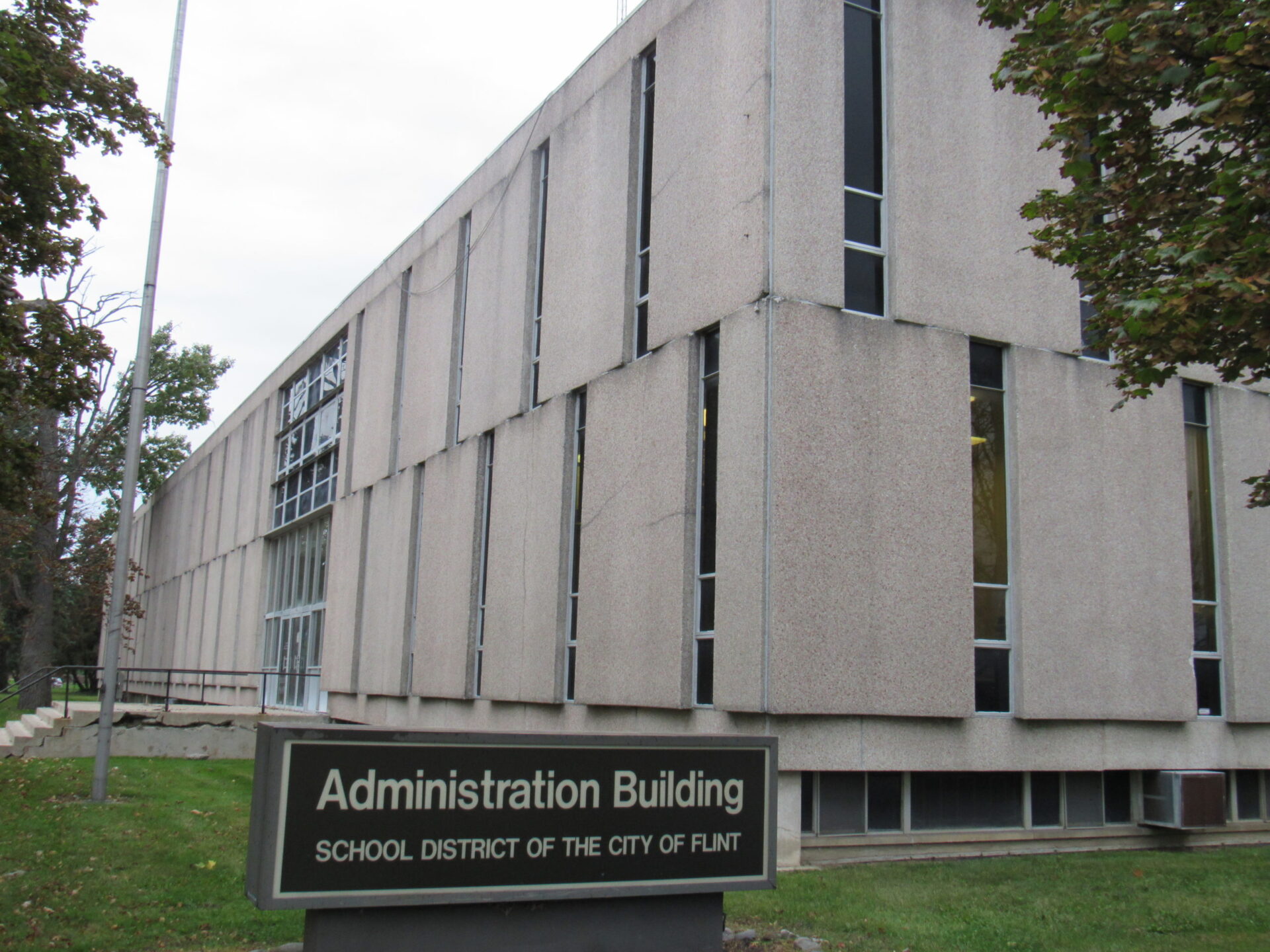By Harold C. Ford
In another big number for Flint Community Schools (FCS), the Michigan Department of Education (MDOE) and FCS announced on April 24, 2025 that the school district had been awarded $35.9 million to close its “underutilized facilities.”
More specifically, the money is meant for FCS “to reduce the number of active school buildings from 11 to seven by closing four underutilized facilities and maximizing the use of the remaining schools.”
In all, three Michigan districts were awarded $75 million in grants “to more efficiently use their resources to educate children and improve school infrastructure,” the MDOE statement indicated. The other two districts awarded were Union City Community Schools in Branch and Calhoun counties ($23.6M) and North Central Area schools in Menominee County ($15.4M).
Such large numbers will surprise few of those who have followed the state of affairs in Flint’s public schools and elsewhere, as public-school systems continue to experience ongoing infrastructure woes wrought by aging, deteriorating buildings and precipitous loss of students and concomitant state aid.
$23B investment needed in Michigan school buildings
Only two days prior to the MDOE’s April 24 announcement, the department issued a statement declaring “a nearly $23 billion investment is necessary to carry out much-needed infrastructure work in schools across Michigan over 10 years.”
The statement cited a March 2025 report on an 18-month study of the state’s school facility needs regarding “heating, ventilation, and air conditioning; plumbing; roofing; fire prevention; and electrical service needs.”
Though the study examined health, safety, and wellness concerns of K-12 instructional school buildings, its authors note that it did not include other possible costs such as technology equipment, administrative, athletic, playground, or transportation facilities.
“It also does not address replacing interior finishes, parking lots or other instructional buildings dedicated to preschool or adult education,” the executive summary states, “or modernizing building configurations to meet current instructional practices.”
According to the report, the study included over 243 million square feet of school building space, and projected costs that were identified over a 10-year period included: $5.3B in the next 1-3 years; $6.9B in the next 4-6 years; and $10.5B in the next 7-9 years.
Big FCS numbers in recent decades
FCS has been awash in big numbers for decades as it shrinks in size along with the community it serves. A bloated lineup of abandoned and aging buildings, coupled with precipitous student loss, has moved the school system toward a fiscal reckoning.
A brief timeline:
- 1976 to 2017: FCS closed 45 buildings in 41 years from 1976 to 2017 as the City of Flint’s population dropped from nearly 200,000 to about 80,000. Then, from 2017 to 2023, closures came to a halt as district officials chose not to shutter any of its 13 buildings still in use over those six years.
- 2014: The financial profile of FCS rocketed into red numbers with a $20 million loan taken out by the district. That same year, the auditing firm Plante Moran informed the district that it was encumbered by a debt totaling $22 million.
- March 2017: East Village Magazine (EVM) reported that FCS’ peak enrollment of 47,867 in 1968 had declined to 5,000 students, an approximate loss of 90 percent. “Flint’s student population, which once filled up 54 school buildings, now inhabits 11 schoolhouses.”
- April 2017: Then-FCS Superintendent Bilal Tawwab told EVM, “There’s a total of 15,000 school-age kids in the city of Flint. We have a third of the market share.”
- September 2020: The Michigan Department of Treasury told FCS, “The district projects to remain in deficit until Fiscal Year 2035-36.”
- April 2021: EVM reported on the Flint Education Continuum (FEC), a several hundred-million-dollar plan to rescue FCS from a decades-long descent. The 17-party FEC envisioned all new or renovated school buildings for FCS students accompanied by wraparound programming. Then-FCS Superintendent Anita Steward was eventually dismissed as some Flint Board of Education (FBOE) members charged her with not including them in FEC planning. Steward denied the allegation(s) and was awarded $690,000 in November 2024 to settle a resultant lawsuit.
- August 2021: An EVM study found that eleven FCS buildings housing students in grades K-12 “average 70-years-old.” Further, the average age of about 84,000 school buildings in the United States, according to a November 2017 report in Education Week was 44 years. “All our buildings gotta be renovated,” proclaimed then-board secretary Danielle Green.
- August 2021: Dan Mack, an account manager with Johnson Controls (JCI) – a company that was contracted to upgrade HVAC systems in FCS buildings in 2021 – told FBOE members of the unpleasant environment in many/most FCS buildings. “It’s difficult to learn in that environment,” Mack said. “I couldn’t do it.” FCS and JCI later parted in a way that led to a lawsuit, and JCI was eventually awarded $700,000 in a legal settlement with FCS.
- December 2021: Plante Moran and Plante Moran Cresa (PMC) reported that FCS had a 10-year capital need of $174 million for its 11 schools. Plante Moran’s Holly Stefanski told FBOE members, “You’re definitely not going to be in excellent financial shape for a long time.”
- May 2023: The United Teachers of Flint and Michigan Education Association urged FCS to begin closing and consolidating an approximate 40 properties maintained by the district that serve as “a drain on vital resources.” PMC’s Senior Vice President Nicole Blocker told FCS, “You only need half of the [occupied] buildings.
- January 2024: FCS Superintendent Kevelin Jones asked Michigan lawmakers for help in addressing the district’s “$56,093,404 in debt [and] an operational deficit of $14,420,492.”
- April 2024: An EVM study found that FCS enrolls just 20 percent of the school-age students that reside within the district’s boundaries. This results in a loss of roughly $100 million annually as eighty percent of its possible students choose other options and take their state-aid with them.
In addition to the above, it should be noted that from 2021 to 2024 the American Rescue Plan Act provided FCS with about $156.7 million in several waves of Covid-19 economic relief funding. Even so, Brian Jones, then-FCS Interim Chief Financial Officer, warned in 2023, “Once that [Covid-19] money dries up, if careful adjustments are not made, the district could be facing a financial cliff.”







